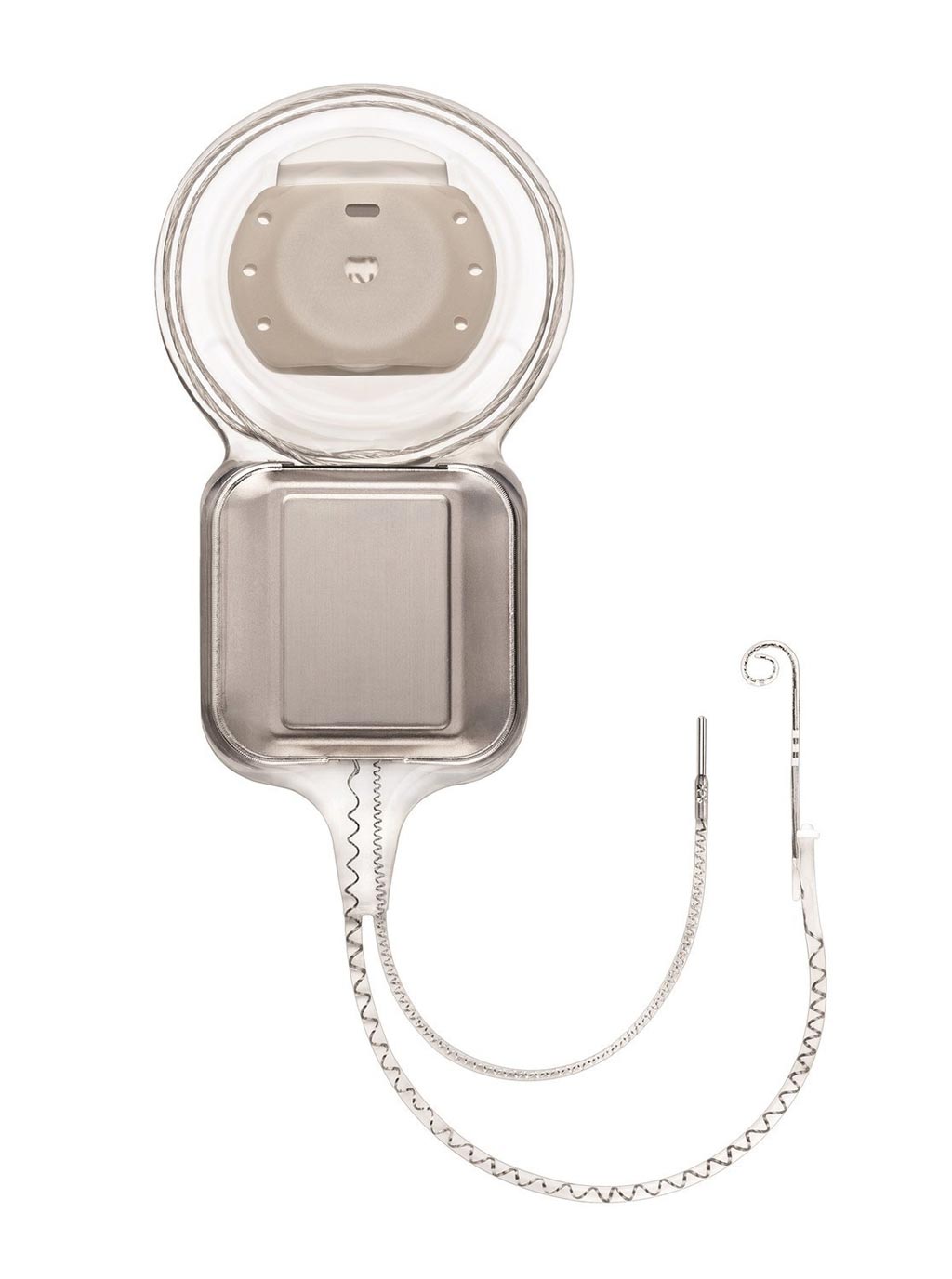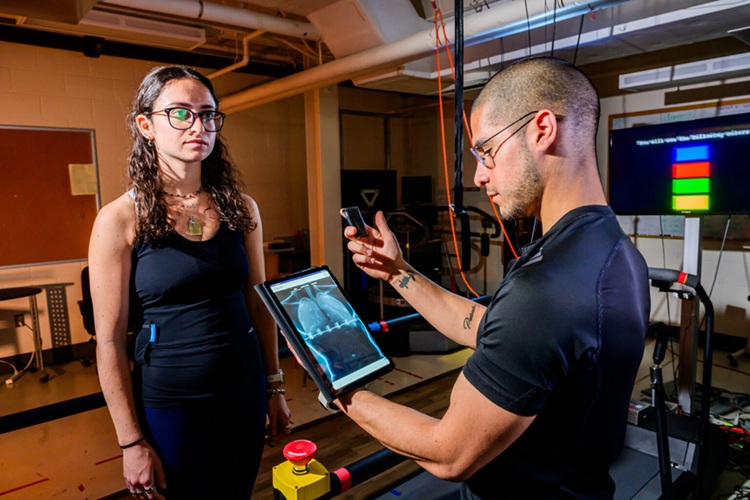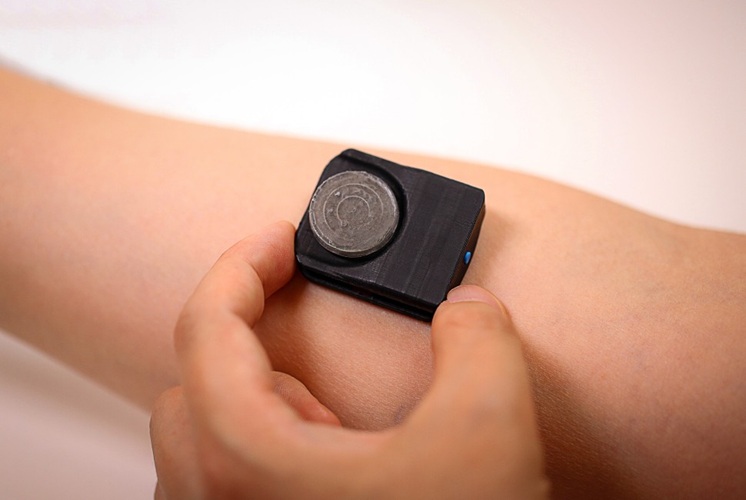Innovative Cochlear Implant Enables Direct Android Connectivity
|
By HospiMedica International staff writers Posted on 24 Jun 2019 |

Image: The Nucleus Profile Plus Series cochlear implant (Photo courtesy of Cochlear).
A new cochlear implant hearing aid offers easier access to magnetic resonance imaging (MRI) and expanded connectivity to Android smartphones via Google direct streaming.
The Cochlear (Centennial, CO, USA) Nucleus Profile Plus Implant with the Nucleus 7 Sound Processor allows users access to direct streaming with a compatible android phone, dependent upon implementation of Google Audio Streaming for Hearing Aids (ASHA) protocol into the handsets. Users can also connect to their implanted hearing aid using the Nucleus smart app, which allows them to control, monitor, and customize hearing settings, view personalized hearing information, and even locate a missing sound processor, all from the convenience of their smartphone.
Other features include Hearing Tracker, which records coil-offs time and time in speech (the amount of time spent in speech environments, including FM radio and streaming audio); and ForwardFocus, a user-activated algorithm that reduces distracting noise coming from behind a person so they can more easily enjoy a face-to-face conversation. The implant is designed so that cochlear implant recipients have safe access to magnetic resonance imaging (MRI) scans, without the need to remove the internal magnet or shielding the implant. In case it is required the magnet is still accessible for removal, if needed.
“For more than two decades, Cochlear has been pleased to provide Nucleus Cochlear Implant recipients with access to MRIs. Now, with the approval of the Nucleus Profile Plus Implant, we are able to provide our cochlear implant recipients MRI access without the need to remove the internal magnet or needing a head wrap,” said Tony Manna, president of Cochlear Americas. “We are delivering this new innovation without sacrificing our longstanding cochlear implant reliability track record, our thin implant design, and the easy to access magnet that ensures our recipients have continued MRI access now and in the future.”
In a normal ear, sound vibrations in the air lead to resonant vibrations of the basilar membrane inside the cochlea. The movement of hair cells, located all along the basilar membrane, creates an electrical disturbance that can be picked up by the surrounding nerve cells, allowing the brain to interpret the nerve activity and determine what sound frequency is being heard. The cochlear implant bypasses the hair cells and stimulates the cochlear nerves directly using electrical impulses. This allows the brain to interpret the frequency of sound as it would if the hair cells of the basilar membrane were functioning properly.
Related Links:
Cochlear
The Cochlear (Centennial, CO, USA) Nucleus Profile Plus Implant with the Nucleus 7 Sound Processor allows users access to direct streaming with a compatible android phone, dependent upon implementation of Google Audio Streaming for Hearing Aids (ASHA) protocol into the handsets. Users can also connect to their implanted hearing aid using the Nucleus smart app, which allows them to control, monitor, and customize hearing settings, view personalized hearing information, and even locate a missing sound processor, all from the convenience of their smartphone.
Other features include Hearing Tracker, which records coil-offs time and time in speech (the amount of time spent in speech environments, including FM radio and streaming audio); and ForwardFocus, a user-activated algorithm that reduces distracting noise coming from behind a person so they can more easily enjoy a face-to-face conversation. The implant is designed so that cochlear implant recipients have safe access to magnetic resonance imaging (MRI) scans, without the need to remove the internal magnet or shielding the implant. In case it is required the magnet is still accessible for removal, if needed.
“For more than two decades, Cochlear has been pleased to provide Nucleus Cochlear Implant recipients with access to MRIs. Now, with the approval of the Nucleus Profile Plus Implant, we are able to provide our cochlear implant recipients MRI access without the need to remove the internal magnet or needing a head wrap,” said Tony Manna, president of Cochlear Americas. “We are delivering this new innovation without sacrificing our longstanding cochlear implant reliability track record, our thin implant design, and the easy to access magnet that ensures our recipients have continued MRI access now and in the future.”
In a normal ear, sound vibrations in the air lead to resonant vibrations of the basilar membrane inside the cochlea. The movement of hair cells, located all along the basilar membrane, creates an electrical disturbance that can be picked up by the surrounding nerve cells, allowing the brain to interpret the nerve activity and determine what sound frequency is being heard. The cochlear implant bypasses the hair cells and stimulates the cochlear nerves directly using electrical impulses. This allows the brain to interpret the frequency of sound as it would if the hair cells of the basilar membrane were functioning properly.
Related Links:
Cochlear
Latest Health IT News
- Printable Molecule-Selective Nanoparticles Enable Mass Production of Wearable Biosensors
- Smartwatches Could Detect Congestive Heart Failure
- Versatile Smart Patch Combines Health Monitoring and Drug Delivery
- Machine Learning Model Improves Mortality Risk Prediction for Cardiac Surgery Patients
- Strategic Collaboration to Develop and Integrate Generative AI into Healthcare
- AI-Enabled Operating Rooms Solution Helps Hospitals Maximize Utilization and Unlock Capacity
- AI Predicts Pancreatic Cancer Three Years before Diagnosis from Patients’ Medical Records
- First Fully Autonomous Generative AI Personalized Medical Authorizations System Reduces Care Delay
- Electronic Health Records May Be Key to Improving Patient Care, Study Finds
- AI Trained for Specific Vocal Biomarkers Could Accurately Predict Coronary Artery Disease
Channels
Critical Care
view channel
Novel Intrabronchial Method Delivers Cell Therapies in Critically Ill Patients on External Lung Support
Until now, administering cell therapies to patients on extracorporeal membrane oxygenation (ECMO)—a life-support system typically used for severe lung failure—has been nearly impossible.... Read more
Generative AI Technology Detects Heart Disease Earlier Than Conventional Methods
Detecting heart dysfunction early using cost-effective and widely accessible tools like electrocardiograms (ECGs) and efficiently directing the right patients for more expensive imaging tests remains a... Read more
Wearable Technology Predicts Cardiovascular Risk by Continuously Monitoring Heart Rate Recovery
The heart's response to physical activity is a vital early indicator of changes in health, particularly in cardiovascular function and mortality. Extensive research has demonstrated a connection between... Read more
Wearable Health Monitoring Device Measures Gases Emitted from and Absorbed by Skin
The skin plays a vital role in protecting our body from external elements. A key component of this protective function is the skin barrier, which consists of tightly woven proteins and fats that help retain... Read moreSurgical Techniques
view channel
Intravascular Imaging for Guiding Stent Implantation Ensures Safer Stenting Procedures
Patients diagnosed with coronary artery disease, which is caused by plaque accumulation within the arteries leading to chest pain, shortness of breath, and potential heart attacks, frequently undergo percutaneous... Read more
World's First AI Surgical Guidance Platform Allows Surgeons to Measure Success in Real-Time
Surgeons have always faced challenges in measuring their progress toward surgical goals during procedures. Traditionally, obtaining measurements required stepping out of the sterile environment to perform... Read morePatient Care
view channel
Portable Biosensor Platform to Reduce Hospital-Acquired Infections
Approximately 4 million patients in the European Union acquire healthcare-associated infections (HAIs) or nosocomial infections each year, with around 37,000 deaths directly resulting from these infections,... Read moreFirst-Of-Its-Kind Portable Germicidal Light Technology Disinfects High-Touch Clinical Surfaces in Seconds
Reducing healthcare-acquired infections (HAIs) remains a pressing issue within global healthcare systems. In the United States alone, 1.7 million patients contract HAIs annually, leading to approximately... Read more
Surgical Capacity Optimization Solution Helps Hospitals Boost OR Utilization
An innovative solution has the capability to transform surgical capacity utilization by targeting the root cause of surgical block time inefficiencies. Fujitsu Limited’s (Tokyo, Japan) Surgical Capacity... Read more
Game-Changing Innovation in Surgical Instrument Sterilization Significantly Improves OR Throughput
A groundbreaking innovation enables hospitals to significantly improve instrument processing time and throughput in operating rooms (ORs) and sterile processing departments. Turbett Surgical, Inc.... Read moreBusiness
view channel
Expanded Collaboration to Transform OR Technology Through AI and Automation
The expansion of an existing collaboration between three leading companies aims to develop artificial intelligence (AI)-driven solutions for smart operating rooms with sophisticated monitoring and automation.... Read more















